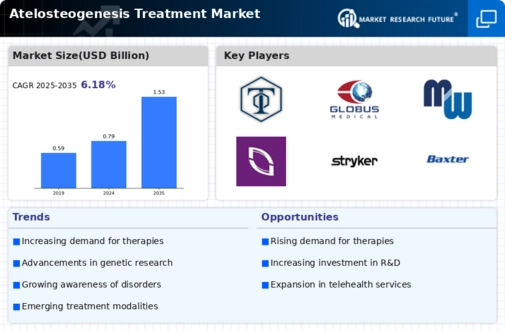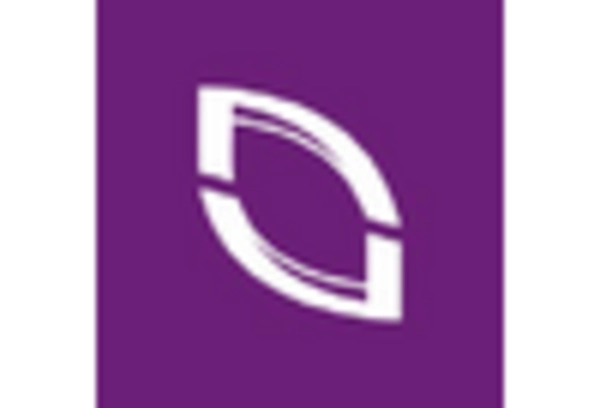Increased Awareness and Advocacy
Increased awareness and advocacy for rare diseases, including atelosteogenesis, are playing a crucial role in the Atelosteogenesis Treatment Market. Patient advocacy groups and organizations are actively working to educate the public and healthcare professionals about the challenges faced by individuals with this condition. This heightened awareness is leading to greater funding opportunities for research and development of targeted therapies. Moreover, as more stakeholders become involved in advocacy efforts, the Atelosteogenesis Treatment Market is likely to benefit from enhanced visibility, which may result in increased support for clinical trials and treatment options.
Innovations in Treatment Modalities
Innovations in treatment modalities are significantly shaping the Atelosteogenesis Treatment Market. Advances in gene therapy, surgical techniques, and personalized medicine are paving the way for more effective interventions. For instance, recent developments in gene editing technologies, such as CRISPR, hold promise for addressing the underlying genetic mutations associated with atelosteogenesis. Furthermore, the introduction of novel surgical approaches aimed at correcting skeletal deformities is enhancing patient outcomes. As these innovations continue to evolve, they are expected to drive growth in the Atelosteogenesis Treatment Market, attracting investment and research efforts focused on improving the quality of life for affected individuals.
Rising Prevalence of Atelosteogenesis
The Atelosteogenesis Treatment Market is experiencing a notable increase in demand due to the rising prevalence of atelosteogenesis, a rare genetic disorder characterized by skeletal dysplasia. Recent estimates suggest that the incidence of this condition may be higher than previously understood, with a potential prevalence of 1 in 100,000 live births. This growing recognition of atelosteogenesis is prompting healthcare providers and researchers to focus on developing effective treatment options. As awareness increases, the Atelosteogenesis Treatment Market is likely to expand, driven by the need for specialized therapies and interventions tailored to the unique challenges posed by this disorder.
Collaboration Between Academia and Industry
Collaboration between academia and industry is emerging as a vital driver in the Atelosteogenesis Treatment Market. Partnerships between research institutions and pharmaceutical companies are fostering the exchange of knowledge and resources necessary for advancing treatment options. Such collaborations often lead to the development of novel therapies and clinical trials aimed at addressing the specific needs of patients with atelosteogenesis. As these partnerships continue to grow, they are likely to enhance the research landscape, ultimately benefiting the Atelosteogenesis Treatment Market by accelerating the pace of innovation and improving patient outcomes.
Regulatory Incentives for Rare Disease Treatments
Regulatory incentives for rare disease treatments are significantly influencing the Atelosteogenesis Treatment Market. Governments and regulatory bodies are increasingly recognizing the need to expedite the development of therapies for rare conditions. Initiatives such as orphan drug designations and fast-track approvals are encouraging pharmaceutical companies to invest in research and development for atelosteogenesis treatments. These incentives not only reduce the time and cost associated with bringing new therapies to market but also enhance the attractiveness of the Atelosteogenesis Treatment Market for investors and developers, potentially leading to a surge in innovative treatment options.

















Leave a Comment